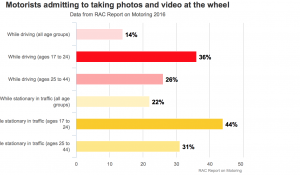HGV Cab Cameras and Media Perception: Is This The Turning Point?
This year, Highways England have harnessed HGVs to help tackle dangerous driving on our roads. Using secret wide angle cameras in unmarked lorries’ dashboards, the inconspicuous trucks have been capturing video records of unsafe driving behaviour.
The move follows the success of a trial last year, which saw over 4,000 dangerous drivers caught. By allowing unsuspecting law breakers to be followed by the cab and have their behaviour recorded, police forces could then pull over the offenders and deal with the situation – be it a warning, or a prosecution.
What was promising and encouraging to see is the mainstream media’s reaction to these announcements. Rather than berate the ‘spying’ HGVs, the reaction to the police and Highway England’s efforts to increase road safety through immediate intervention has been, on the whole, positive. Although the phrase ‘spy camera’ has a somewhat antagonistic feel, national news outlets reporting about the HGV cameras in a favourable manner.
With the exception of a few pieces implying that the new camera systems are an underhand enemy to be loathed, the majority focus instead on what is most important – the driving crimes which are being caught. These cameras aren’t just there to catch out drivers going slightly over the speed limit: they have caught drivers using their mobile phones at the wheel – the dangers of which have never been more prominent than in recent years – a driver writing on a notepad, one eating a meal and even another brushing their teeth!
So why is reaction so important? Historically, reporting on HGVs has taken the same one-sided route – sensationalistic pieces reporting lorries’ near misses and irresponsible driving. Although, of course, such behaviour from professional drivers is absolutely abhorrent and should be disciplined appropriately – the issue lies within the bias of reporting and how this influences public perception.
If the only stories the public read about the professional driving industry in consumer media outlets involve the few extreme cases of poor and dangerous driving, an assumption will grow about the whole of the driving industry. This can lead to misconceptions and seriously tarnish the reputation of the majority of the safe, skilful HGV drivers whose dedicated work allows the UK’s businesses to thrive. Without HGVs, the country and its economy would come to a standstill – an aspect which is never mentioned in stories reporting on dangerous HGV driving.
So the positive reaction to the HGV in-cab cameras is a step in the right direction – at the least, it gives another perspective to HGV stories. Although we are, of course, not there yet in a balanced and fair narrative on lorries in consumer media, we can take hope from the start of this movement and continue to raise the profile of the industry ourselves through our highest quality Barnes professional standards.







